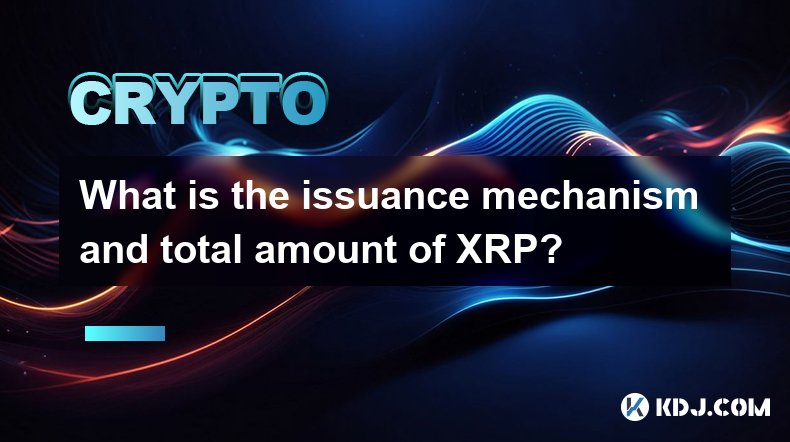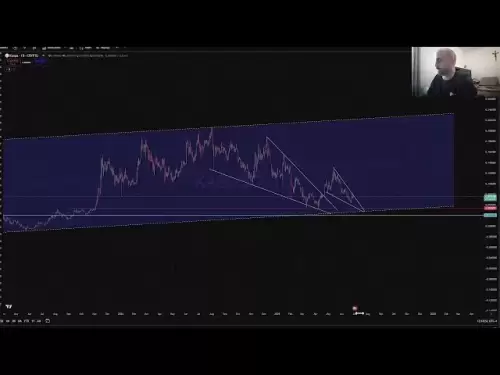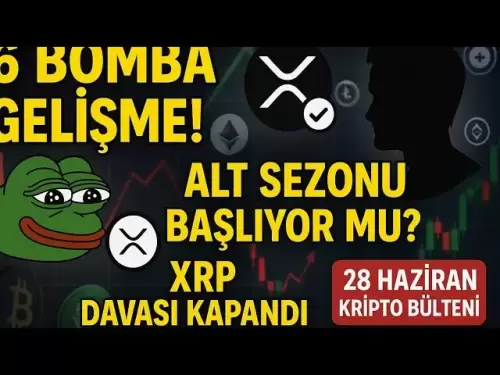-
 Bitcoin
Bitcoin $107,341.7259
0.15% -
 Ethereum
Ethereum $2,438.6204
0.70% -
 Tether USDt
Tether USDt $1.0003
-0.02% -
 XRP
XRP $2.1866
1.94% -
 BNB
BNB $649.0952
0.36% -
 Solana
Solana $150.9602
5.63% -
 USDC
USDC $0.9999
0.00% -
 TRON
TRON $0.2742
0.40% -
 Dogecoin
Dogecoin $0.1645
1.93% -
 Cardano
Cardano $0.5669
1.18% -
 Hyperliquid
Hyperliquid $37.8286
4.19% -
 Bitcoin Cash
Bitcoin Cash $491.4669
-2.74% -
 Sui
Sui $2.8150
3.06% -
 Chainlink
Chainlink $13.4184
2.91% -
 UNUS SED LEO
UNUS SED LEO $9.0809
0.27% -
 Avalanche
Avalanche $18.0295
2.60% -
 Stellar
Stellar $0.2396
1.19% -
 Toncoin
Toncoin $2.8587
0.13% -
 Shiba Inu
Shiba Inu $0.0...01160
2.59% -
 Litecoin
Litecoin $86.4192
1.45% -
 Hedera
Hedera $0.1486
1.19% -
 Monero
Monero $308.4324
0.87% -
 Polkadot
Polkadot $3.4202
1.43% -
 Bitget Token
Bitget Token $4.6436
-0.34% -
 Dai
Dai $0.9998
-0.02% -
 Ethena USDe
Ethena USDe $1.0002
0.00% -
 Uniswap
Uniswap $7.1527
3.29% -
 Pi
Pi $0.5357
-8.45% -
 Pepe
Pepe $0.0...09588
4.61% -
 Aave
Aave $259.9759
0.81%
What is the issuance mechanism and total amount of XRP?
XRP's 100 billion total supply, unlike Bitcoin, isn't mined; Ripple Labs centrally controls its issuance via a gradually released, pre-mined supply managed through escrow accounts, a feature sparking ongoing debate about decentralization.
Mar 11, 2025 at 09:11 pm

Key Points:
- XRP's issuance mechanism is not a standard coin mining process like Bitcoin. Instead, it's centrally controlled by Ripple Labs.
- A significant portion of XRP was pre-mined at its inception.
- The total supply of XRP is fixed at 100 billion tokens.
- Ripple releases XRP into the market gradually, following a predetermined schedule, though this schedule has seen adjustments over time.
- Understanding XRP's issuance differs significantly from understanding the issuance of other cryptocurrencies with decentralized mining processes.
What is the issuance mechanism and total amount of XRP?
XRP, the native cryptocurrency of the Ripple network, operates under a fundamentally different issuance mechanism compared to many other cryptocurrencies. Unlike Bitcoin or Ethereum, which rely on decentralized mining to create new coins, XRP's issuance is centralized and controlled by Ripple Labs, the company behind the technology. This centralized control is a significant point of contention and discussion within the cryptocurrency community.
A large portion of the total XRP supply was pre-mined at the time of the project's launch. This initial allocation wasn't earned through computational power or mining; it was created and held by Ripple Labs. This pre-mining is a key aspect distinguishing XRP from many decentralized cryptocurrencies that emerge through a distributed mining process.
The total supply of XRP is capped at 100 billion tokens. This fixed supply is a crucial element often cited as a feature differentiating it from cryptocurrencies with potentially unlimited or unpredictable supply increases. The fixed supply aims to provide a degree of scarcity, potentially impacting its value proposition in the market.
Unlike some cryptocurrencies with algorithmic issuance schedules, Ripple's release of XRP into the market has involved a degree of planned distribution. Initially, there was a more defined schedule for the gradual release of XRP. However, Ripple has adapted its release strategy over time, adjusting to market conditions and its own strategic goals. This flexibility in their release strategy has led to debate and scrutiny.
The process of XRP distribution is distinct from the consensus-based mechanisms employed by many other cryptocurrencies. It’s crucial to remember that this centralized control over the issuance of XRP is a core difference from the decentralized nature of many other blockchain projects. This centralized approach has raised concerns about its decentralization and its implications for the broader cryptocurrency ecosystem.
The gradual release of XRP is a deliberate strategy by Ripple. The reasoning behind this phased approach is often attributed to preventing market flooding and potentially maintaining a more stable price. However, the actual impact of this strategy remains a topic of ongoing analysis and discussion within the cryptocurrency space.
Understanding the Ripple Escrow Accounts
A significant aspect of XRP's issuance involves the use of escrow accounts. Ripple holds a substantial portion of XRP in escrow accounts. These accounts are designed to release XRP into the market over a period of time, helping to regulate the supply and potentially mitigating volatility. The existence of these escrow accounts and the way Ripple manages them are key factors in shaping the market dynamics of XRP.
The release schedule from these escrow accounts has undergone revisions over time. Ripple has adapted the release schedule based on a variety of factors, including market conditions and their own strategic business objectives. These adjustments to the release schedule are a noteworthy aspect of XRP's ongoing development.
Transparency surrounding the escrow accounts and their management is a subject of much interest. The information provided by Ripple on the escrow account releases is vital to market participants seeking to understand the dynamics of XRP's supply. The level of transparency and the detail provided by Ripple on this topic has evolved over time.
The role of escrow accounts in managing XRP's supply is a critical component of its overall issuance mechanism. It highlights the central role that Ripple plays in shaping the availability and distribution of XRP in the market. Understanding the escrow system is crucial for anyone seeking to understand the long-term implications for XRP's value and its market position.
Distinguishing XRP Issuance from Other Cryptocurrencies
It is crucial to understand that XRP's issuance is fundamentally different from that of many other major cryptocurrencies. Bitcoin, for example, uses a decentralized mining process where new coins are created through computational effort. This decentralized approach stands in stark contrast to the centralized control exercised by Ripple over XRP's issuance.
Ethereum, another prominent cryptocurrency, employs a similar proof-of-work (or proof-of-stake) mechanism, although the specifics differ. This decentralized approach ensures a distributed control over the creation of new coins, unlike XRP's centralized model. This key difference influences the overall character and perception of each cryptocurrency within the broader market.
The comparison highlights the unique aspects of XRP's issuance mechanism. The centralized nature of XRP's issuance is a major point of differentiation and a factor that often generates discussions and debate within the cryptocurrency community. This difference is not merely technical; it has significant implications for the governance and potential future development of the XRP ecosystem.
The different issuance models impact the perception of decentralization and security. Centralized issuance can raise concerns about potential manipulation or control by a single entity, while decentralized issuance aims for greater transparency and resilience against single points of failure. These differing approaches lead to a varied understanding of risk and potential rewards for investors.
Frequently Asked Questions:
Q: Is XRP inflation-proof?
A: While the total supply of XRP is capped at 100 billion, the controlled release by Ripple could still impact its price and purchasing power. It's not truly "inflation-proof" in the strictest sense.
Q: Can I mine XRP?
A: No, XRP is not mined. Its issuance is controlled entirely by Ripple Labs.
Q: What is the purpose of the escrow accounts?
A: Ripple uses escrow accounts to gradually release XRP into the market, aiming to manage supply and price stability.
Q: Is XRP's centralized issuance a concern?
A: Yes, some argue that the centralized nature of XRP's issuance raises concerns about potential manipulation and decentralization. Others argue that this centralized approach offers greater control and stability.
Q: How does XRP's issuance differ from Bitcoin's?
A: Bitcoin's issuance is decentralized through mining, while XRP's issuance is centralized and controlled by Ripple. This fundamental difference affects the overall dynamics and perception of each cryptocurrency.
Disclaimer:info@kdj.com
The information provided is not trading advice. kdj.com does not assume any responsibility for any investments made based on the information provided in this article. Cryptocurrencies are highly volatile and it is highly recommended that you invest with caution after thorough research!
If you believe that the content used on this website infringes your copyright, please contact us immediately (info@kdj.com) and we will delete it promptly.
- XRP, Ripple, and Bitcoin: Decoding the Latest Crypto Moves
- 2025-06-29 08:30:13
- NBA Legend Scottie Pippen's Crypto Picks: SHIB and XRP in the Spotlight
- 2025-06-29 08:50:12
- Bitcoin, US Strategy, and Cryptocurrency Regulation: Navigating the Digital Frontier
- 2025-06-29 09:10:13
- Chainlink's $17 Breakout: Bullish Momentum Fueled by Mastercard Partnership
- 2025-06-29 08:30:13
- Crypto Launches Q3 2025: Top Picks to Watch
- 2025-06-29 09:10:13
- BTC Bull Token: Riding Bitcoin's Bull Run to Crypto Glory
- 2025-06-29 09:30:11
Related knowledge

How to customize USDT TRC20 mining fees? Flexible adjustment tutorial
Jun 13,2025 at 01:42am
Understanding USDT TRC20 Mining FeesMining fees on the TRON (TRC20) network are essential for processing transactions. Unlike Bitcoin or Ethereum, where miners directly validate transactions, TRON uses a delegated proof-of-stake (DPoS) mechanism. However, users still need to pay bandwidth and energy fees, which are collectively referred to as 'mining fe...

USDT TRC20 transaction is stuck? Solution summary
Jun 14,2025 at 11:15pm
Understanding USDT TRC20 TransactionsWhen users mention that a USDT TRC20 transaction is stuck, they typically refer to a situation where the transfer of Tether (USDT) on the TRON blockchain has not been confirmed for an extended period. This issue may arise due to various reasons such as network congestion, insufficient transaction fees, or wallet-rela...

How to cancel USDT TRC20 unconfirmed transactions? Operation guide
Jun 13,2025 at 11:01pm
Understanding USDT TRC20 Unconfirmed TransactionsWhen dealing with USDT TRC20 transactions, it’s crucial to understand what an unconfirmed transaction means. An unconfirmed transaction is one that has been broadcasted to the blockchain network but hasn’t yet been included in a block. This typically occurs due to low transaction fees or network congestio...

How to check USDT TRC20 balance? Introduction to multiple query methods
Jun 21,2025 at 02:42am
Understanding USDT TRC20 and Its ImportanceUSDT (Tether) is one of the most widely used stablecoins in the cryptocurrency market. It exists on multiple blockchain networks, including TRC20, which operates on the Tron (TRX) network. Checking your USDT TRC20 balance accurately is crucial for users who hold or transact with this asset. Whether you're sendi...

What to do if USDT TRC20 transfers are congested? Speed up trading skills
Jun 13,2025 at 09:56am
Understanding USDT TRC20 Transfer CongestionWhen transferring USDT TRC20, users may occasionally experience delays or congestion. This typically occurs due to network overload on the TRON blockchain, which hosts the TRC20 version of Tether. Unlike the ERC20 variant (which runs on Ethereum), TRC20 transactions are generally faster and cheaper, but during...

The relationship between USDT TRC20 and TRON chain: technical background analysis
Jun 12,2025 at 01:28pm
What is USDT TRC20?USDT TRC20 refers to the Tether (USDT) token issued on the TRON blockchain using the TRC-20 standard. Unlike the more commonly known ERC-20 version of USDT (which runs on Ethereum), the TRC-20 variant leverages the TRON network's infrastructure for faster and cheaper transactions. The emergence of this version came as part of Tether’s...

How to customize USDT TRC20 mining fees? Flexible adjustment tutorial
Jun 13,2025 at 01:42am
Understanding USDT TRC20 Mining FeesMining fees on the TRON (TRC20) network are essential for processing transactions. Unlike Bitcoin or Ethereum, where miners directly validate transactions, TRON uses a delegated proof-of-stake (DPoS) mechanism. However, users still need to pay bandwidth and energy fees, which are collectively referred to as 'mining fe...

USDT TRC20 transaction is stuck? Solution summary
Jun 14,2025 at 11:15pm
Understanding USDT TRC20 TransactionsWhen users mention that a USDT TRC20 transaction is stuck, they typically refer to a situation where the transfer of Tether (USDT) on the TRON blockchain has not been confirmed for an extended period. This issue may arise due to various reasons such as network congestion, insufficient transaction fees, or wallet-rela...

How to cancel USDT TRC20 unconfirmed transactions? Operation guide
Jun 13,2025 at 11:01pm
Understanding USDT TRC20 Unconfirmed TransactionsWhen dealing with USDT TRC20 transactions, it’s crucial to understand what an unconfirmed transaction means. An unconfirmed transaction is one that has been broadcasted to the blockchain network but hasn’t yet been included in a block. This typically occurs due to low transaction fees or network congestio...

How to check USDT TRC20 balance? Introduction to multiple query methods
Jun 21,2025 at 02:42am
Understanding USDT TRC20 and Its ImportanceUSDT (Tether) is one of the most widely used stablecoins in the cryptocurrency market. It exists on multiple blockchain networks, including TRC20, which operates on the Tron (TRX) network. Checking your USDT TRC20 balance accurately is crucial for users who hold or transact with this asset. Whether you're sendi...

What to do if USDT TRC20 transfers are congested? Speed up trading skills
Jun 13,2025 at 09:56am
Understanding USDT TRC20 Transfer CongestionWhen transferring USDT TRC20, users may occasionally experience delays or congestion. This typically occurs due to network overload on the TRON blockchain, which hosts the TRC20 version of Tether. Unlike the ERC20 variant (which runs on Ethereum), TRC20 transactions are generally faster and cheaper, but during...

The relationship between USDT TRC20 and TRON chain: technical background analysis
Jun 12,2025 at 01:28pm
What is USDT TRC20?USDT TRC20 refers to the Tether (USDT) token issued on the TRON blockchain using the TRC-20 standard. Unlike the more commonly known ERC-20 version of USDT (which runs on Ethereum), the TRC-20 variant leverages the TRON network's infrastructure for faster and cheaper transactions. The emergence of this version came as part of Tether’s...
See all articles

























































































